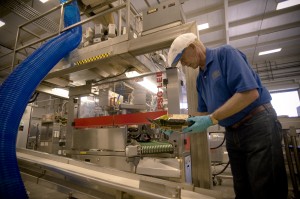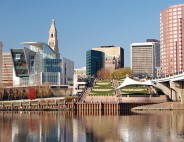
California Breaking Barriers to Conducting Business
02 Jan, 2015
By Rachel Duran
California’s economy has improved significantly over the past few years, with credit rating upgrades across the board. In November, the state’s voters approved a rainy day fund to ensure the state government has billions of dollars in funds available for economic downturns. “This is the first time this has happened in a very long time,” says Brook Taylor, deputy director for communications, California Governor’s Office of Business and Economic Development (GoBiz).
And businesses are taking note of California’s new found fiscal responsibility where since 2011, more than 75,000 foreign entities (companies outside of California) have registered a business in the state. “Companies include Samsung, Genetech, Amazon, Hyundai, Mercedes, Petco, and DC Comics, which have expanded in or relocated to California,” Taylor says.
Other projects include the relocation of 1,000 of The Boeing Co.’s employees from Washington state to California. And even though Tesla selected Nevada as the home for its gigafactory, where it will manufacture batteries for its Model 3 electric car, the company remains California-based and plans to add 6,500 jobs in the state. Tesla has purchased new facilities in Newark and Lathrop to support auto manufacturing.
“California once again had the largest number of companies listed on the Inc. 5,000 fastest growing companies in America,” Taylor adds. “What that means is companies in California are growing at a faster rate, adding jobs and scaling up quicker than any other place in the country.
“The one thing that I think is enduring and is indicative of California is that we have the most dynamic economy in the world,” he continues. “We have more paths and opportunities to grow industries and diversify our economy.”
Down To Business
- California is the No.1 state for venture capital, receiving four times more venture capital than the nation’s average.
- California is the No. 1 state in the country for attracting foreign direct investment.
- California offers a huge market, home to nearly 38 million people.
-
California’s 3.4 million small businesses account for 99 percent of the state’s employers, employing 52 percent of the workforce.
Industries and Innovations
California’s manufacturing sector continues as the nation’s leader in the sector for the most jobs, the most firms, and the highest amount of output. California added manufacturing jobs the last three years, which hadn’t happened in the decade prior.
The activity comes from existing and new manufacturers, which has trickled down to the state’s biotech and high-tech sectors. The state’s biotech cluster is the largest such sector anywhere in the world.
California has also seen an increase in construction-related activities. “Obviously, a lot was made about the housing boom and bust in California, and we are starting to see recovery and an uptick in construction jobs across the state,” Taylor says.
The state continues to be a leader when it comes to cleantech-related companies. Proterra Inc., which builds electric busses in South Carolina, has plans to relocate to the West Coast to better serve its customers. The city of Industry has found a spot for the company, and has submitted paperwork for a state grant of $3 million to assist the city with the project. Details are pending.
California, which is one of the world’s leading agricultural producers, continues to be hampered by drought. Water technology firms are taking root in the state, with a cluster forming in the city of Clovis. “The Central Valley and Fresno County in particular, are one of the highest agricultural producing areas in the world,” says Tina Sumner, community and economic development director, city of Clovis. “We have economic stake in dealing with this drought, not just today but with water technology in general.”
Economic development leaders have partnered with Cal State University-Fresno, which conducts water technology research, to attract businesses related to the sector.
When it comes to the trade sector, California is a global gateway to the country, capturing a significant amount of foreign direct investment, Taylor says. The state is also the country’s No. 1 exporter of goods.
The logistics industry is vital to the community of Ontario, which is located at the intersection of major freeways that connect to Los Angeles and major points, says John Andrews, economic development director, Ontario Economic Development Agency. The city’s airport is home to hubs for UPS and FedEx. UPS is expanding its facilities in the community. What’s more, 3M has broken ground for a larger facility.
Andrews says medical product companies and automotive companies operate distribution centers in the community. Food processing, manufacturing and assembly activities are also important to the community.
Medical-related activities are emerging in Clovis, where the medical center added a five-story tower to its operation. Two medical office towers are under construction. “Their growth in the area is a way to jump start our health and wellness cluster,” Sumner says.
California Health Sciences University is a new university in the state, and has opened a new pharmacy school in Clovis. The university is looking for a permanent site for its medical complex.
In the city of Gilroy, food-related manufacturing and distribution are significant clusters in the community. United Natural Foods is building what will ultimately be an 800,000-square-foot distribution center. The first phase is 450,000 square feet. Another company, Epic Wine, has acquired an existing 162,000-square-foot warehouse to support its growth.
In Palm Springs, the city council and the mayor want to grow jobs and innovation related to wind, solar and health care industries, in particular. “As our tourism industry continues to thrive, it is critical that we do not lose focus on our commitment to diversify the valley’s economy and create jobs outside the service sector, says Mayor Steve Pougnet. “The iHub Program is the catalyst to achieve that goal. Expanding the iHub concept and advance manufacturing across the valley will benefit the region and add strength to the advancement of science, technology, math, and engineering, for generations to come.”
The Coachella Valley Innovation Hub (CViHub) is a co-working space in Palm Springs. The city matched a $1 million grant to bring the facility up to code. A new initiative is the development of the Health & Medical Innovation Center at the Palm Springs Accelerator Campus. The Desert Health Care District put up $500,000 for the 14,000-square-foot facility.

Packaged garlic coming off a production line at Christopher Ranch LLC in Gilroy.
Photo: Christopher Ranch
Talent and Education
California has more high-tech jobs than any other state, with 931,000 people employed in these jobs. The next closest states are Texas with 492,000 workers in the sector, and New York with 312,000 workers.
The state’s 2,323 biomedical companies employ 267,271people, and account for $115.4 billion in annual revenues – which is more than the gross state product of 18 states.
When it comes to funding future innovations, the University of California’s Technology Transfer Program is first among the nation’s universities in the number of patents granted, and in the number of successfully commercialized inventions, creating more than 1,000 inventions a year.
In regard to industrial R&D taking place in California, the state represents almost 25 percent of the nation’s total, coming in at $50.6 billion.
Assets
With a rebound in the economy, including four consecutive and on time balanced budgets coming from Gov. Jerry Brown’s office, the state has created a new tax credit program. Eligible companies awarded funding from the California Competes program are able to customize their five-year award package.
Taylor says the state has also created a first-of-its kind online application to support California Competes. “Our analysts and program people are standing by to help companies through the process,” he says. “We want to lower barriers to entry so companies can apply for and potentially receive these incentives. We also have a 25 percent set aside for small business owners.”
In other tax credit programming, this year the California Film and Television Tax Credit will increase from $100 million to $330 million to encourage film and TV production outside of a 30-mile radius of Los Angeles.
At the local level, the city of Clovis reevaluated its development fees and has reduced fees for industrial and office operations by nearly 30 percent. “This made us competitive with the jurisdictions around us in the Central Valley,” Sumner says.
The city also reduced fees in its core area by nearly 70 percent.
In the city of Palm Springs, economic development officials were requesting funds to expand a successful facade and interior remodel program, which applied to certain areas in the city. Officials want to take the program city wide.
In another initiative, city officials supported four developers to invest in the city’s long-term vacant spaces. The developers each invested a minimum of $1 million and were awarded with a $250,000 grant, which was tied to employment measures.
Palm Springs also has a “hotel incentives program which is a 50 percent transient occupancy tax with our hotels that reinvest in their properties,” says Cathy Van Horn, economic development administrator for the city’s community and economic development department. “There are eight hotels in the program, which equates to $230 million in improvements, and an increase in total occupancy over the last three years of an average of 15 to 20 percent. That has made a difference in many of the properties that were very tired.”
Van Horn says in 2010, a 1 percent sales tax took effect to collect funds to pay for public infrastructure and redevelopment in the downtown, which has new retail spaces, hotels and an event center. The funds helped offset the fact that the state of California no longer has redevelopment agencies.
Changes in Redevelopment
Part of the state’s fiscal belt tightening was the dissolution in the 2011 budget of the state’s more than 400 redevelopment agencies, which has created a flurry of activity for bid programs on properties slated for redevelopment.
In the city of Industry, 71 parcels were impacted by the change, some of which have been conveyed to the city; 45 parcels of predominately industrial land will go up for sale. “We are going through the Successor Agency, which is the oversight board for the Department of Finance,” says Don Sachs, executive director, Industry Manufacturers Council in the city of Industry. “We anticipate approval this month and to enter into escrow. By the beginning of the second quarter we should see some major sized buildings going up —300,000- to 400,000-square-foot buildings.”
In Clovis, officials are working with three property owners in the region of the Dry Creek Business Park to create additional space, one of the city’s last expenditures of monies available from this redevelopment project area. The expansion features 42 lots, as well as the installation of infrastructure.
In addition, the Old Town area of Clovis has a 1-acre parcel that will use the last of the bond monies allocated to the area to create Centennial Plaza. The plaza will feature parking, and a public gathering area ideal for meetings and events such as concerts and art shows.
Clovis, much like other communities in the state, is reviewing its comprehensive plan. “Our council wanted to see what the city needs to look like in order to be fiscally sustainable by 2035,” Sumner says. “We need to increase the rate in which we are attracting jobs by 40 percent over the rate that we are now in order to meet our goals. This is another point of why maintaining the business related land uses is so critical.”
She is referring to land designated along Highway 168 for the Sierra Gateway Commerce Center. The highway comes through the city and provides connection within minutes to Highway 99, which is one of the state’s main north-south corridors.
In the city of Gilroy, available land is zoned for industrial and employment centers, which is important as communities to the north of the city are built up, focusing on infill developments. Gilroy is located at the crossroads of U.S. Highway 101 and California highways 152 and 156, which provide access to the Bay Area, the Central Valley and the Salinas Valley, says Tammy Brownlow, president and CEO, Gilroy Economic Development Corp. The community is a 20-minute drive from San Jose.
In addition to sites for businesses, residential construction is also picking up in California. In Ontario, new residential construction and infrastructure installation is underway in the New Model Colony region of the city, which is an 8,000-acre development.
Outdoors and Recreation
One of California’s best-known winter destinations is Lake Tahoe. Mountain towns, top resorts, and pristine wilderness ring the lake, providing just about every kind of wintertime outdoor experience. The area’s Squaw Valley is a top draw for elite skiers.
Lifestyle
Andrews says Ontario provides access to beaches and mountains, both of which are an hour away in either direction of the city. “Businesses should know we are situated in a region that gives people ample access to those leisure opportunities,” he says. “And compared to other parts of the region, housing is more affordable, as are rents for office and industrial space.”
Brownlow says Gilroy’s lower costs of living are attractive to workers in the Silicon Valley. “Housing costs are significantly lower than areas to the north of us,” she says. “Many residents commute to areas north of us to work. This is a great opportunity to demonstrate to companies they don’t need to locate in Mountain View or Palo Alto to access these workers because they are living here.”
In addition to its proximity to parks, lakes and hiking trails, Gilroy is known worldwide for its annual three-day garlic festival, held the last weekend in July and which attracts 100,000 visitors.
California Governor’s Office of Business and Economic Development
Gilroy Economic Development Corp.
Ontario Economic Development Agency
Illustration by renjith krishnan at Free Digital Photos.net
Related Posts
-

PENNSYLVANIA: Ready to Grow with You
-

Arkansas: Melting Pot of Industries
-

Connecticut: Strong in Manufacturing & Tourism
-

Ontario: A Top Economic Leader in North America
-

California: Economic Growth on Fast Track
-

Innovation and Connections Energize Washington State
-

Governor Funds the Rebuilding of Rhode Island
-

Illinois Seeing Growth from Its Quality Workforce
-

Florida: Aerospace Flies Higher, Jobs Take Off
-

Wyoming Grows Technology and Innovation Assets










